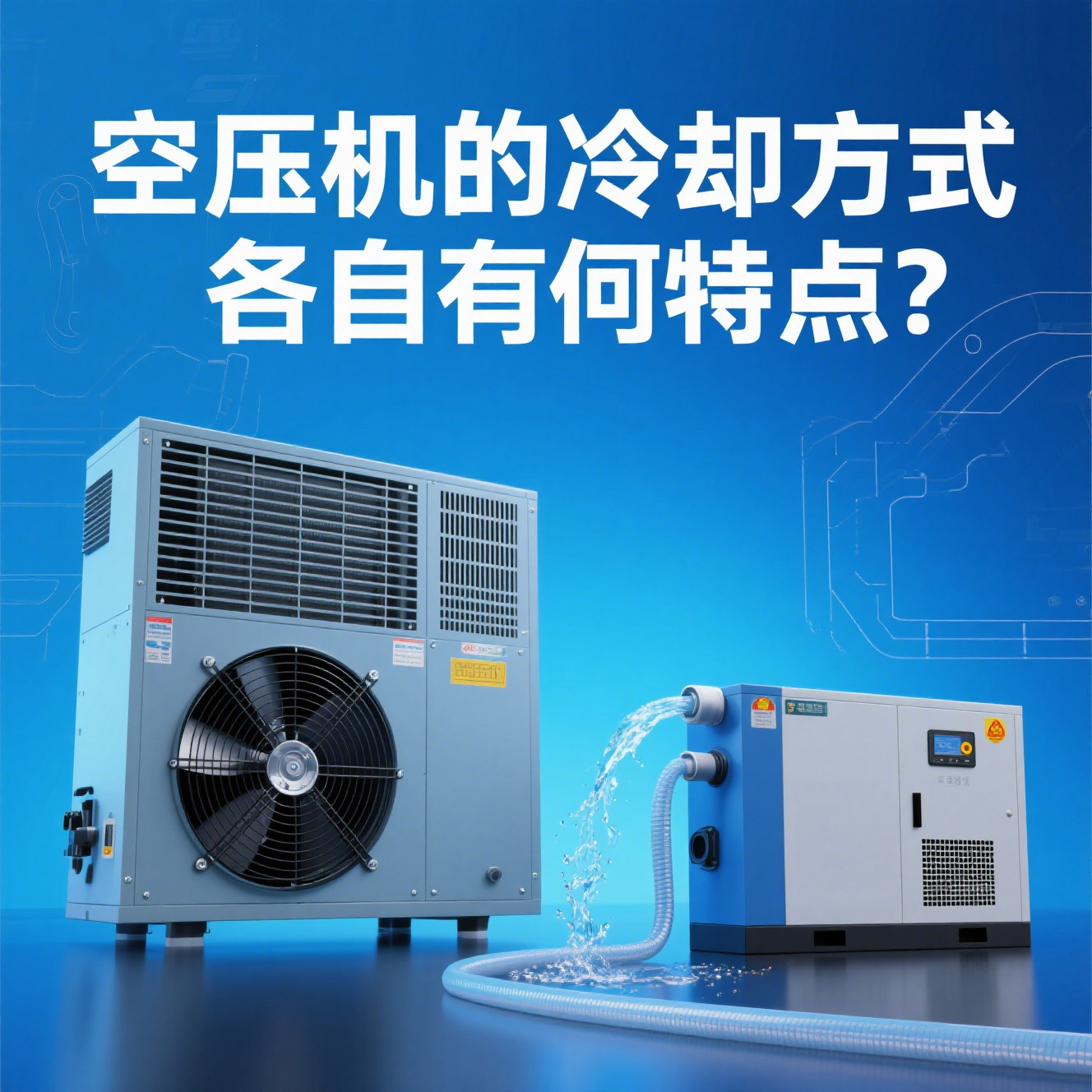Air compressors generate substantial heat during operation and require cooling systems to prevent overheating damage. There are two common cooling methods, each suited to specific scenarios; understanding their features helps select the right equipment.
Air-cooled type: The “convenient option” relying on air cooling
Air-cooled compressors have built-in fans and radiators, like “electric fans” for the equipment. When running, fans rotate to dissipate heat through radiators into the air, with no need for additional water. With a simple structure and no complex water pipelines, they are easy to move, ideal for small spaces or areas with limited water access, such as outdoor construction sites and small workshops.
However, they are highly environment-dependent—cooling efficiency drops in high summer temperatures or dusty surroundings, requiring regular radiator cleaning. Their cooling capacity is limited, typically suitable for small compressors with power below 30kW.
Air-cooled compressors have built-in fans and radiators, like “electric fans” for the equipment. When running, fans rotate to dissipate heat through radiators into the air, with no need for additional water. With a simple structure and no complex water pipelines, they are easy to move, ideal for small spaces or areas with limited water access, such as outdoor construction sites and small workshops.
However, they are highly environment-dependent—cooling efficiency drops in high summer temperatures or dusty surroundings, requiring regular radiator cleaning. Their cooling capacity is limited, typically suitable for small compressors with power below 30kW.
Water-cooled type: The “high-efficiency expert” using water circulation
Water-cooled compressors need connected water pipes to carry away heat via circulating water, like “water-cooled air conditioners” for the equipment. Cooling water absorbs heat inside the unit, is cooled by cooling towers, and recirculates. This method offers high, stable cooling efficiency unaffected by ambient temperature, supporting long-term high-intensity operation, perfect for large compressors and factories in high-temperature environments.
Yet, it requires stable water supply and drainage systems, with pipeline installation needed. Initial costs are slightly higher. Daily maintenance demands clean water quality and regular descaling to avoid pipeline blockages that reduce cooling performance.
Water-cooled compressors need connected water pipes to carry away heat via circulating water, like “water-cooled air conditioners” for the equipment. Cooling water absorbs heat inside the unit, is cooled by cooling towers, and recirculates. This method offers high, stable cooling efficiency unaffected by ambient temperature, supporting long-term high-intensity operation, perfect for large compressors and factories in high-temperature environments.
Yet, it requires stable water supply and drainage systems, with pipeline installation needed. Initial costs are slightly higher. Daily maintenance demands clean water quality and regular descaling to avoid pipeline blockages that reduce cooling performance.
In short, choose air cooling for small spaces or mobility needs, and water cooling for high-power, continuous operation. Selecting the right method based on equipment size and environment ensures your compressor runs “coolly.”
Post time: Jul-25-2025










